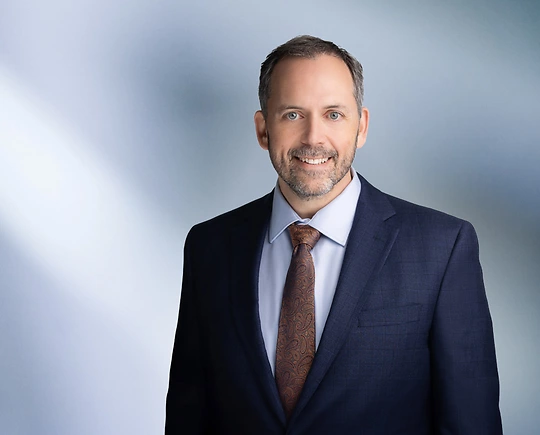
IP Monday Law Blog
 On October 27, 2025, the United States Patent and Trademark Office (USPTO) rolled out the Streamlined Claim Set Pilot Program to test a pretty simple idea:
On October 27, 2025, the United States Patent and Trademark Office (USPTO) rolled out the Streamlined Claim Set Pilot Program to test a pretty simple idea:
If you give the examiner fewer, cleaner claims up front, can the USPTO move your case faster and improve examination quality? Short answer: They’re going to try. Long answer: If you qualify and you’re strategic, this could be a legitimate speed boost.
Let’s break down what this is, who qualifies, and how I’d use it.
1. What is the Streamlined Claim Set Pilot?
It’s a special-status program. If you’re accepted, your patent application will be advanced out of turn for examination and placed on an examiner’s special docket — but only until the first Office Action issues. After that first Office Action (or first written restriction requirement), you’re back on the normal timeline.
In other words: this is about accelerating that first piece of feedback, not guaranteeing a fast allowance.
The USPTO is doing this to gather data on:
- Pendency (how long it takes to get picked up) and;
- Examination quality (are cleaner claim sets easier to examine).
2. When does the pilot run?
It begins October 27, 2025 and ends the earlier of October 27, 2026 or when each USPTO Technology Center has accepted ~200 applications into the program.
The USPTO can also shut it down early if workload, uneven uptake, or other factors get involved. They’ll post how many petitions have been filed and accepted per Tech Center on their site.
Translation: it’s capped, and it’s competitive.
3. Who’s eligible?
To get in, you need to hit on all of these:
(a) Application type:
- Must be an original, noncontinuing, non-reissue utility application filed under 35 U.S.C. § 111(a).
- “Noncontinuing” i.e. not a continuation, not a divisional, not a CIP.
- If you claim domestic benefit to any earlier nonprovisional U.S. filing, you’re out.
- National stage 371 applications? Not eligible.
- Reissue? Not eligible. [MPEP §201.02]
Important nuance: Claiming priority to a provisional or a foreign application (Paris priority) is OK. Claiming benefit to an earlier U.S. nonprovisional is not.
(b) Filing date timing
- The application has to have an actual filing date before October 27, 2025.
- You then have to file the petition to make special before the first Office Action (including before any written restriction requirement).
If your case is already docketed to an examiner when they review your petition, the USPTO says it will “generally dismiss” the petition. No second chances. And no fee refund.
(c) Claim limits (this is important)
At the moment you file the petition:
- No more than one independent claim
- No more than 10 total claims
- No multiple dependent claims
- All dependent claims must follow a strict format
That dependent claim format matters. Every dependent claim must:
- Explicitly refer back to a prior claim in the preamble
- Include every limitation of that prior claim
- Add a further limitation
- Stay in the same statutory class as the independent claim (i.e., you can’t have an apparatus claim 1 and then a method claim 2 “A method of making the widget of claim 1…” — that’s not allowed in this pilot)
Good:
- “The widget of claim 1 further comprising C.”
Bad:
- “A method of producing the widget of claim 1…” (wrong statutory class)
- “A fastener for use in securing the widget of claim 1…” (doesn’t include all prior limitations)
- “A device comprising the widget of claim 1 fastened to a gadget…” (the reference to claim 1 isn’t in the preamble) [Federal Register Notice, Oct. 27, 2025]
Critical catch: If you’re admitted into the program, the examiner can refuse to enter any later amendment that:
- Adds a second independent claim,
- Takes you above 10 total claims,
- Introduces a multiple dependent claim, or
- Breaks the dependency rules above.
So, you are basically locking in a lean claim posture for the life of the case.
(d) Publication status
- If you filed with a non-publication request, you must rescind it (PTO/SB/36) no later than when you file the petition. This program is not available to secret applications.
(e) Format / filing logistics
- The application must have been filed electronically in Patent Center.
- The spec, claims, and abstract must have been filed in compliant DOCX format.
- The petition itself must be filed electronically using Form PTO/SB/472 (“Certification and Petition to Make Special Under the Streamlined Claim Set Pilot Program”) with the petition fee under 37 CFR 1.17(h). [ 37 CFR 1.102(d); 37 CFR 1.16(u)]
(f) Inventor filing limit
You have to certify that no inventor or joint inventor on this application has already been named on more than three other nonprovisional applications where someone has filed this same pilot petition. That cap is per-inventor, not per-assignee.
This is the USPTO’s way of preventing one prolific filer from consuming the entire pilot.
4. What do you actually get?
If you’re accepted:
- Your application is placed on the examiner’s special docket.
- You’re examined out of turn.
- You get either:
- A first Office Action, or
- A written restriction requirement (if they think you still have more than one invention hiding in that claim set).
That first action / first restriction requirement ends your “special” status. After that, prosecution proceeds normally. [MPEP §§708, 812.01]
Timing note: If the examiner needs to call you for a species election or restriction, they’ll try telephonic restriction first. If you don’t respond within five business days, they’ll mail a written restriction. That written restriction counts as the “first Office Action,” and your fast-track status ends right there.
5. Can I tweak claims later?
Kinda, but carefully. During prosecution:
- If you try to add more claims than allowed, add a multiple dependent claim, or introduce a dependent claim that shifts statutory class, the examiner can treat that amendment as non-responsive.
- If the amendment is at least a bona fide attempt to advance the case but still breaks the claim rules, the examiner can give you two months (extendable up to the statutory six-month max under 35 U.S.C. 133) to fix it. After that, they stop being generous. [MPEP §710.02(b)]
After final:
- You’re back under normal 37 CFR 1.116 practice.
- Appeal is normal MPEP Chapter 1200 procedure.
- No special treatment on appeal.
There is no withdrawal mechanism from the program. If you hate how it’s going, the only “out” is to abandon and file a continuing application — but continuations and divisionals are not eligible for the pilot. So, you don’t get to carry your golden ticket forward.
6. Why this matters
A messy opening claim set with 4 independents, 28 dependents, and three statutory classes is like running 15 different offenses at once. Nobody executes cleanly and it slows the whole game down.
But if you come in with one clear independent claim and tight, incremental dependent claims, the examiner can actually run with you. You get the ball first possession. You get to see how the defense (the examiner) responds. You get to adjust your game plan faster.
For startups and small companies, that first Office Action is often the moment you learn:
- Is this patentable at all?
- What art are we really up against?
- Do investors get to hear “patent pending and moving quickly,” or “we’re still waiting for the PTO to pick it up”?
That’s not just prosecution strategy — that’s runway strategy.
7. How to use this (and where to be cautious)
Great use cases:
- Flagship core invention you want examined ASAP so you can show investors diligence and traction.
- A clean, focused embodiment you actually plan to commercialize (not just a wish list).
- A technology space where speed to notice competitors matters.
Be careful if:
- You rely heavily on multiple statutory classes (system plus method plus computer-readable medium, etc.). The pilot forces you to pick a lane.
- You normally start broad and negotiate down. Here, you’re starting tight — and you’re agreeing to stay tight in that application.
- You expect to need rich fallback positions and alternative architectures in dependent claims that don’t neatly sit in a single statutory class.
Practical workaround:
You can still pursue broader or alternate claim sets later via continuation practice… but remember: continuations are not eligible for this pilot. They go back to normal speed.
So the play may be:
- File your main noncontinuing parent with a disciplined single-claim-family structure, petition into the pilot; get art on the record fast.
- After first action, file a continuation with all your other flavors and statutory classes for long-term scope.
That gives you both speed and depth.
8. Action items
If you’re a founder, GC, or tech transfer office, here’s what to do next:
1. Identify candidates. Look at any original utility application you filed before October 27, 2025 that hasn’t gotten a first Office Action yet and is not already docketed to an examiner.
2. Trim the claim set. Get it down to:
- One independent,
- ≤10 total,
- No multiples,
- Clean dependent format,
- One statutory class. You can use a preliminary amendment to do this before or with the petition.
3. Confirm DOCX filing and publication.
- Application must’ve been filed in DOCX via Patent Center.
- If you requested non-publication, you must rescind that.
4. File Form PTO/SB/472 with the petition fee under 37 CFR 1.17(h).
That’s the official petition to make special in this program.
5. Move quickly.
Each Tech Center gets roughly 200 slots, and the Office can terminate early.
9. Key Takeaways
- The USPTO is piloting a fast-lane for certain patent applications starting October 27, 2025.
- To qualify, your app must be an original U.S. utility application (not a continuation), filed before Oct 27, 2025, and limited to one independent claim and ten total claims.
- If accepted, you jump the line and get your first USPTO response faster.
- After that first response, speed treatment ends — but by then you’ve learned where you stand and can plan funding, messaging, and continuation strategy.
- This is very good for companies who need early clarity on patentability and messaging for investors.
If you have further questions about the guidelines for this Streamlined Claim Program, please contact a member of our IP Law Team.
- Senior Attorney
Mikhail "Mike" Murshak is a licensed patent attorney and experienced Intellectual Property (IP) attorney specializing in patent, trademark strategy and acquisition, and general IP and business counseling including ...

